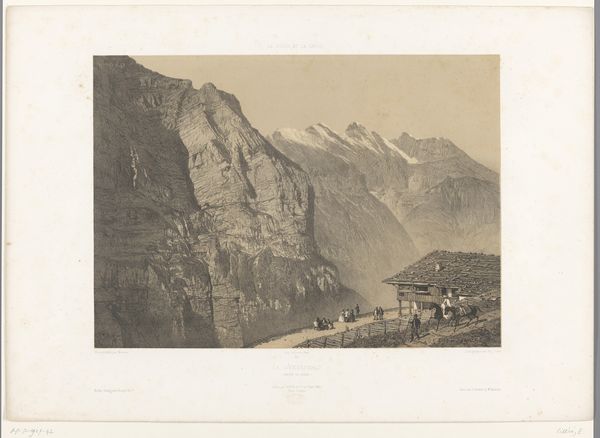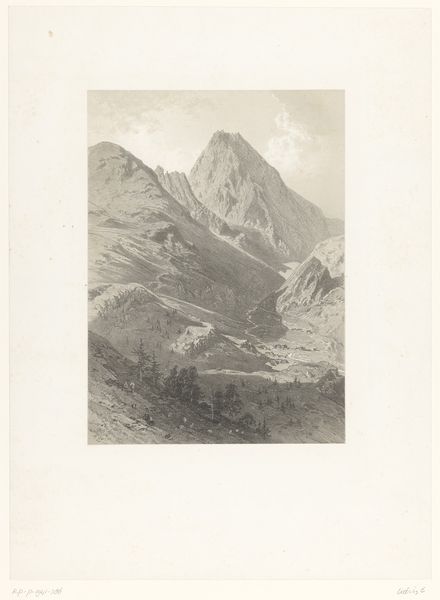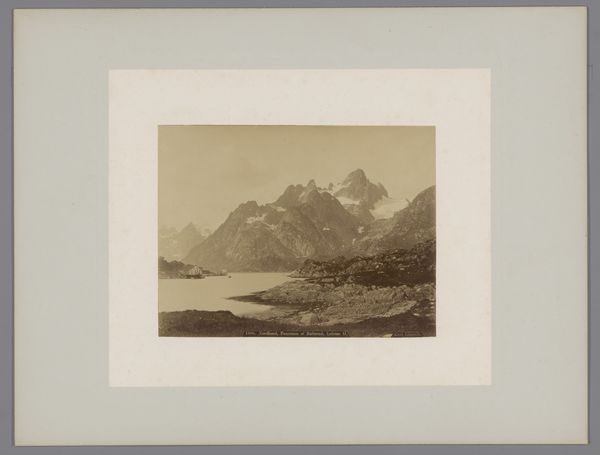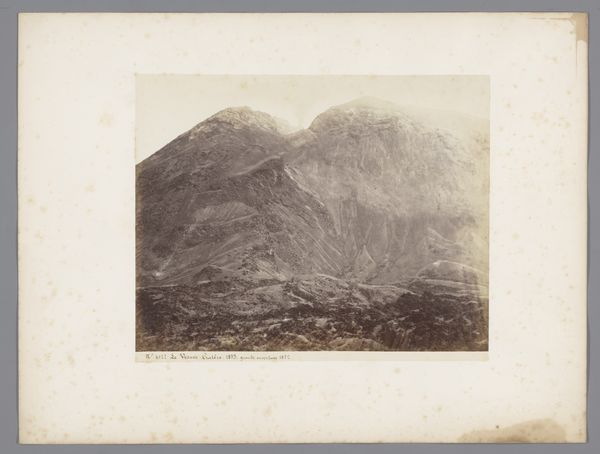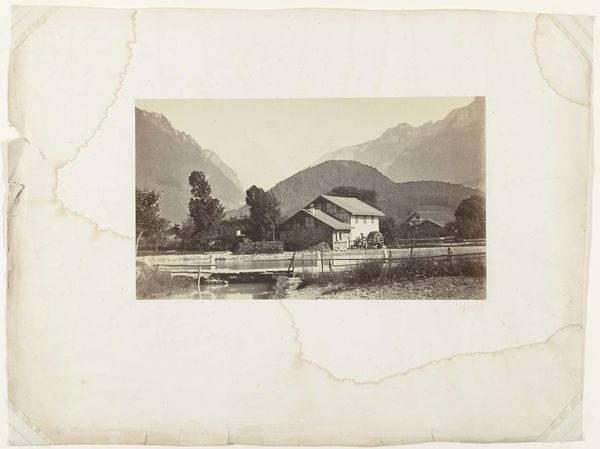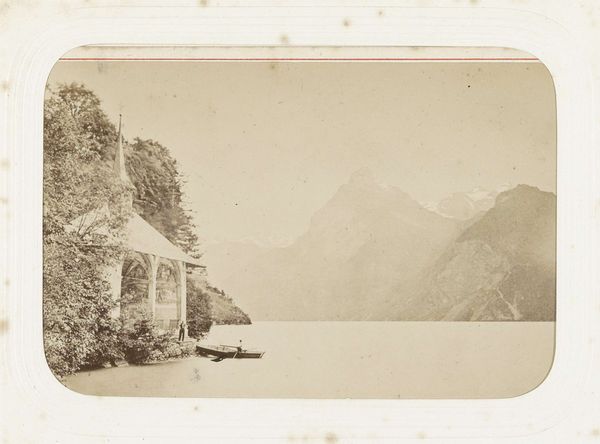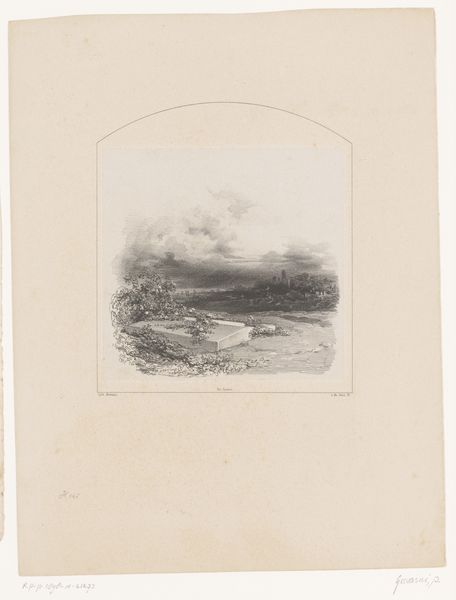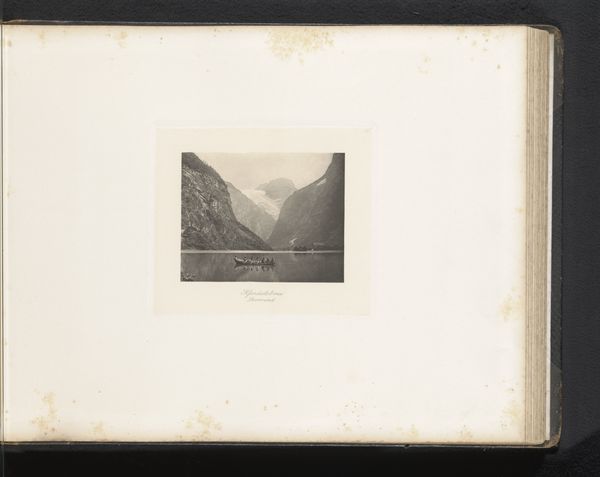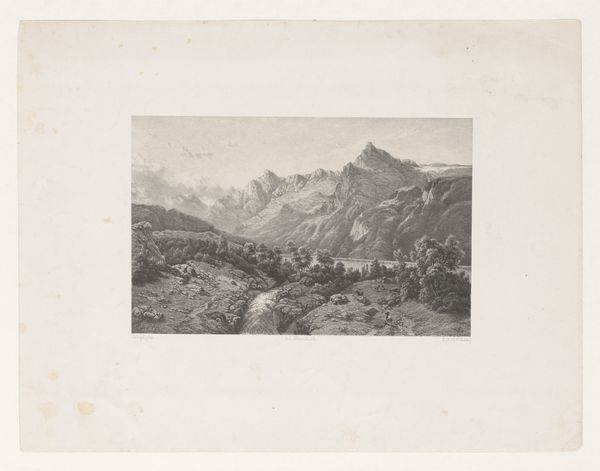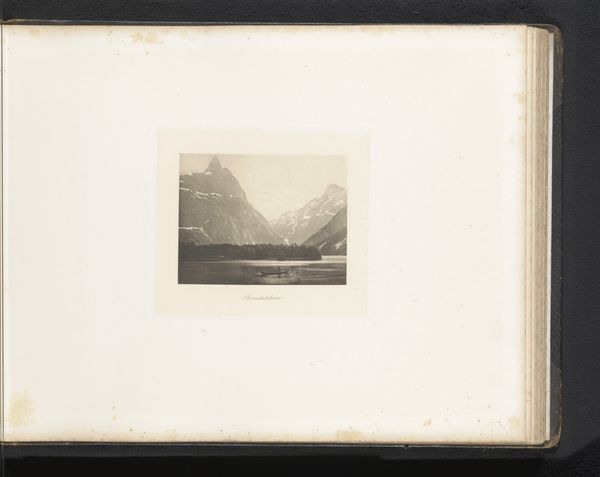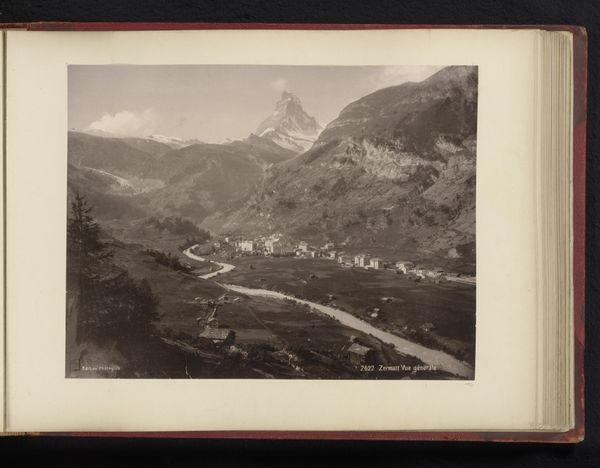
Dimensions: height 384 mm, width 229 mm
Copyright: Rijks Museum: Open Domain
Curator: This gelatin silver print, created sometime between 1859 and 1862 by Bisson Frères, is entitled "Alpenlandschap met een dorpje op de voorgrond", which translates to "Alpine landscape with a village in the foreground." Editor: My first thought is one of fragility and impermanence. The fading image and the paper's aged imperfections, particularly around the edges, contribute to a palpable sense of something precious and slowly being lost. Curator: That's insightful. The aesthetics of decay definitely speak to cultural memory, I think, inviting contemplation on how landscapes both endure and evolve over time. Mountain ranges have strong symbolic association, as visual and spiritual apex points in many cultures, conveying timeless themes about striving for achievement. Editor: Exactly. And how that ambition to climb is inevitably met by degradation and aging. I'm drawn to how the village, nestled beneath the mountain, signifies human presence, dominated and shadowed by both nature's grandeur and potential ruthlessness. In light of increasing climate change, this power dynamic feels even more relevant today. Curator: I'd like to expand on your idea of contrast by considering romanticism versus realism; a duality echoed in the way humans both transform nature, and are humbled by it. This echoes similar tensions in the art world itself during this period, reflecting industrial expansion. Photography granted us unprecedented levels of objective realism and also an ability to stage dramatic compositions. Editor: Certainly. And perhaps what we are seeing here is an emergent public expectation for how we visualize landscapes and rural communities. Photography aided mass dissemination; so it influenced social values through repeated symbolic exposures. It’s interesting to think about this in terms of idealized landscape aesthetics versus lived realities. Curator: Looking at how those themes are relevant for the history of landscape photography, and in light of current trends surrounding environmental issues is an insightful reminder. Thank you for helping unlock some more of this work's complexity. Editor: Thank you, this deeper understanding has provided an added perspective about how artistic conventions continue shaping socio-political dynamics and how humans find meaning within them.
Comments
No comments
Be the first to comment and join the conversation on the ultimate creative platform.


